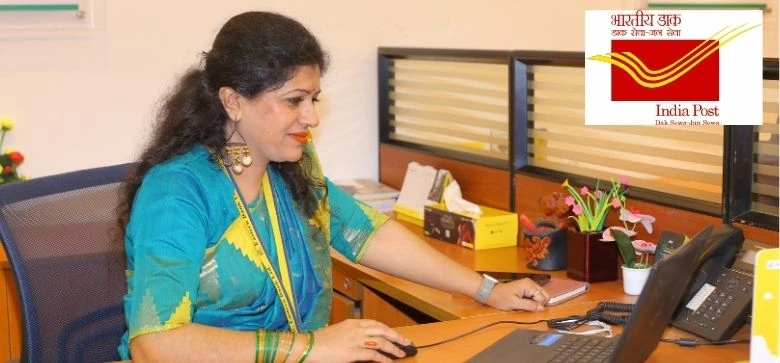
3 December 2025
The Post Office savings bank account is one of the safest and most secure options to save money in India. The rates of interest are fixed by the Reserve Bank of India and accounts can be opened with as low as Rs.500.
You can also open a savings bank account with the post office online. Read ahead to learn how to open post office savings account online.
Currently, you cannot open a savings bank account with the post office using the online method. But you can download the required forms, fill them up, and submit them at your nearest post office to complete the process.
Here are the steps you can follow -
STEP-1: Visit the official India Post website.
STEP-2: Scroll down and locate the ‘Post Office Savings Bank’ icon and click on it.
STEP-3: Click on the ‘Post Office Savings Account’. Here you will be able to see the interest rates, minimum balance, as well as some salient features of a POSA or a Post Office Savings Account.
STEP-4: Scroll to the end of the section and click on ‘Forms Available’. Download and take a printout of the ‘Application form for Opening of Account’.
STEP-5: Fill out the form in block letters, attach your passport-sized photographs, and submit it at your nearest post office.
Once your KYC is completed and your account is opened, you will receive your kit containing your passbook, cheque-book, ATM card, etc.
To be eligible to open an account at the post office, you will have to fulfill these criteria -
You must be above the age of 18
You must be an Indian citizen
If you are a minor, you should at least be 10 years old
Nominal documentation is required for opening a savings account at the post office. They are -
Duly filled application form
Duly filled KYC form
PAN Card
Aadhaar Card/ Passport/ Driving License/ Voter’s Card/ MNREGA job card/ letter issued by National Population Register
Apart from the security of having an account at the post office, the following are the benefits -
There is no lock-in period.
An account can be transferred from one branch to any other branch in India.
The minimum deposit amount is just Rs.500.
The minimum withdrawal amount is Rs.50.
There is no maximum deposit limit.
An interest of 4% is paid on both joint and single accounts.
Only one account can be opened per person.
A joint account can be opened. In the case of the death of one of the account holders, the other will become the sole account holder. If said person already has an account under their name, they will have to close the joint account.
A joint account cannot be converted to a single account and vice versa.
Nomination is mandatory at the time of account opening.
A post office savings account can be opened only by paying cash.
In order to keep the account active, at least one transaction needs to be done in 3 financial years.
Experience Rewards with Every Swipe
As the post office network in India is well-spread, and reaches remote areas, the Post Office Savings Account (POSA) is a great option for rural locations. Apart from this, it is also very safe and reliable to keep your funds with the post office.
Given that post offices are located at convenient locations, you can easily visit them in any locality to withdraw or deposit money. You can even do so from any branch in India.
The money saved in your post office account can also be used as collateral for loans. But in case you want collateral-free loans, you can opt for an instant personal loan from Moneyview. You can get loan amounts from Rs.5,000 to Rs.10 Lakh without having to pledge any collateral.
Finance and Banking Articles
Tax, Filing & Linking Guide
Banking & Investment Tips
Fixed Deposit Insights and Guides
Disclaimer
The starting interest rate depends on factors such as credit history, financial obligations, specific lender's criteria and Terms and conditions. Moneyview is a digital lending platform; all loans are evaluated and disbursed by our lending partners, who are registered as Non-Banking Financial Companies or Banks with the Reserve Bank of India.
This article is for informational purposes only and does not constitute financial or legal advice. Always consult with your financial advisor for specific guidance.
Was this information useful?